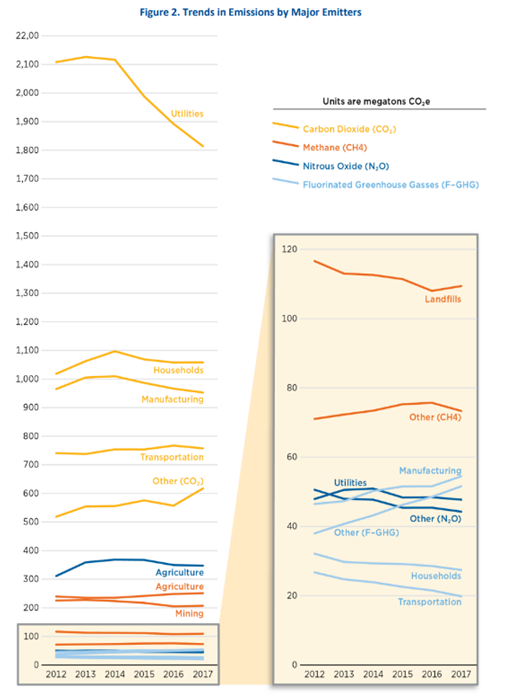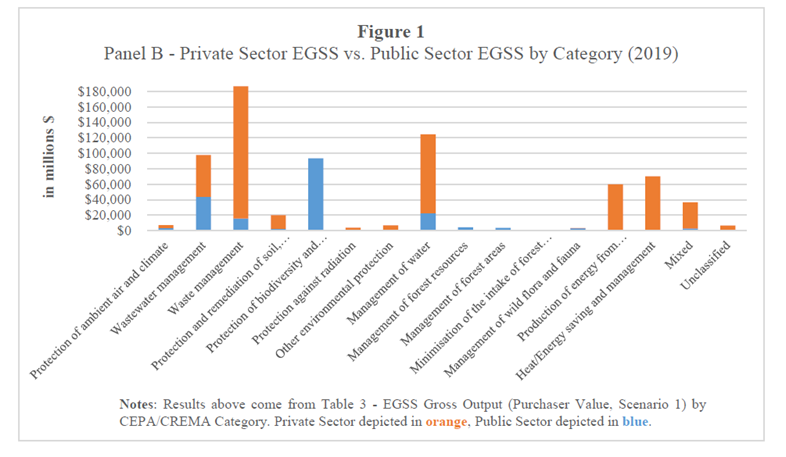A Successful Inaugural Year for Natural Capital Accounting in the United States
By Emily Pindilli, Jane Lubchenco, and Sol Hsiang, Office of Science and Technology Policy Climate and Environment Team
The U.S. economy and our environment are deeply intertwined. A strong economy relies on a stable climate, clean air and water, and the many other benefits that nature provides. On his first week in office, President Biden issued an Executive Order to protect and conserve by 2030 at least 30% of the lands and waters that support and sustain our nation. This is critical to safeguarding the natural resources that all Americans rely on for food, shelter, livelihood, and well-being. The loss of ecosystems, through climate change and overuse, negatively impact our country’s economic growth, sustainability, and resilience. To date, the Biden-Harris Administration has delivered on the most ambitious agenda in history to protect more than 21 million acres of public lands and waters, which contain an abundance of U.S. natural capital, a critical source of our nation’s enduring wealth.
In January 2023, the White House released the first-ever U.S. National Strategy to Develop Statistics for Environmental-Economic Decisions (National Strategy). It creates a system to account for our natural assets—including the minerals that power our tech economy, the ocean and rivers that support our fishing industry, and the forests that clean our air. The Statistics for Environmental-Economic Decisions (SEED) will quantify the economic value of this natural capital, providing critical data to help us monitor changes in the condition and economic value of land, water, air, and other natural assets.
Since the release of the National Strategy, the Biden-Harris Administration has developed pilot natural capital accounts as part of a multi-agency SEED initiative. The pilot accounts rely on existing data to estimate quantities, and in some cases values, of natural capital assets. Pilot accounts demonstrate the feasibility of developing natural capital accounts in the United States, while also identifying key challenges to overcome on the path toward regular production of these statistics. Here we share progress and preliminary results on four of the Phase I natural capital account pilots: land, water, air emissions, and environmental activities.
Pilot National Land Account: The United States has 2.3 billion acres of land on which we grow food; we build homes, schools, and hospitals; we produce energy and minerals; wildlife flourishes; and families hike, camp, and enjoy nature. The Pilot National Land Account aims to measure the value of land in official U.S. economic statistics.

This figure from the pilot land account plots the main economic activity in each location, based on the North American Industry Classification System (NAICS). This effort also provides the first estimate for the total value of land in the contiguous United States, using a consistent method across land-use types. Private land in the contiguous 48 states was valued at $32 trillion, equivalent to roughly 30% of the net wealth already measured in U.S. accounts. Accounting for natural assets like land on our nation’s balance sheet is critical; omitting them would dramatically understate U.S. wealth.
Pilot National Water Account: Americans rely on water for a variety of uses, including drinking, washing, cooking, agricultural irrigation, energy production, mining, and recreation. The water pilot account leverages existing data to quantify water availability and use in the United States by industry. When scaled nationally, this account will track water quantity and quality, which influence availability and cost. The team developing the pilot has already demonstrated how to compute water quality and water emissions for the nation.

This figure from the pilot account maps the volume of water used, changes in use, the proportion of use from groundwater, and the change in that proportion by state.
Pilot National Air Emissions Account: The Bureau of Economic Analysis developed a pilot account for air emissions. Using existing data, including from the U.S. Environmental Protection Agency’s Natural Greenhouse Gas Inventory, this pilot is the first to measure greenhouse gas emissions associated with specific industries on a national scale. For example, the pilot account documents the quantity of carbon dioxide or nitrous oxide emissions attributable to agriculture or the retail industry. The pilot account estimates physical flows for the years 2012-2017, allowing comparisons of trends across industries.

This figure from the analysis illustrates the emissions trends by major economic industry category over the period. Future work will focus on emissions from passenger cars used by businesses and on the flow of particulate matter air pollution.
Pilot National Environmental Activity Accounts: Many expenditures across different industries and in the public sector aim to protect, restore, or preserve the environment. The Pilot National Environmental Activities Account tracks these activities as a consolidated “Environmental Goods and Services Sector,” which quantifies transactions traditionally measured in the National Income and Product Accounts. This account does not track a specific element of the environment, but it is designed to complement natural capital accounts and provide transparency about underlying patterns of national spending. The pilot environmental goods and services account shows that gross output of economic activities in this account reached $725 billion in 2019, equivalent to nearly 2% of the total output of the U.S. economy.

This figure from the analysis breaks down expenditures in this sector by activity type and whether these activities occurred in the public or private sector. These findings reveal that 73% of spending on environmental goods and services in the United States occurs in the private sector. As our environment changes, regular production of an environmental goods and services sector account would be important for tracking how much of the economy is devoted to environmental protection and resource management activities over time.
In the inaugural year of implementing the National Strategy, agencies are making significant progress. The National Oceanic and Atmospheric Administration has taken steps to develop a marine account. Progress is ahead of schedule for developing natural capital accounts such as forests, pollination, urban ecosystems, and natural hazards. In addition, U.S. researchers are working with their European counterparts to understand lessons learned for implementing natural capital accounts in different countries. They will host an international meeting of statistical agencies known as the “London Group” to review, compare, and discuss countries’ efforts to build natural capital accounts. The United States also partnered with Australia and Canada to Cooperate on Natural Capital Accounting, Environmental-Economic Accounting, and Related Statistics in 2023. This partnership provides an opportunity to share and advance technical expertise.
The SEED initiative is steadily moving the United States toward a more complete understanding of our nation’s overall wealth. This statistical infrastructure will help us make informed and transparent decisions regarding our nation’s natural resources, empowering our country to pursue economic growth and prosperity for everyone in America.
###

